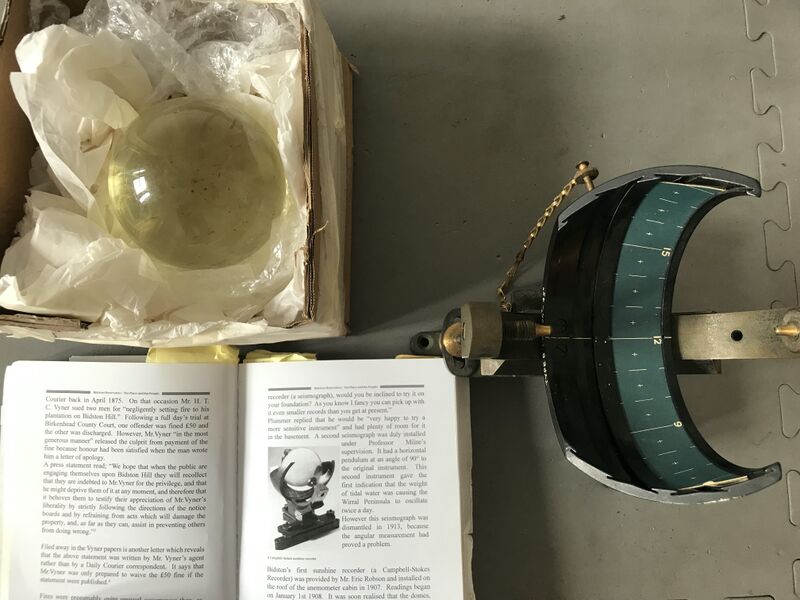Sunshine Recorder
Lived account of using the sunshine recorder
[[File: ]]
Description of the sunshine recorder in situ
A ceramic pillar sits on the roof of the weather cabin. This was for the sun ball (there were different ones for the different seasons). The sun ball - most likely, the , was used at that time, in late 1800s - was accessed by climbing a ladder up the back of the cabin. (It has been cut off now probably for safety).
Campbell Stokes Sunshine Recorder
The recorder measures the intensity of sunshine on any given day, factoring in the clouds or lack of clouds. This is a simple measuring device which is a crystal ball. Underneath the ball, sits calibrated paper. The rays of sun are magnified by the crystal, when the sun is strong, they burn a hole in the paper. Example sun burn The shape and form of the burn gives information about the strength of rays on that day. Example of a Campbell Stokes sunshine recorder
From the audio recording of Joyce Scoffield and Sylvia Asquith
Sylvia Asquith: The Sun ball ... Joyce Scoffield: The sun shines through there and burns a hole in the card… S/ You have three different sizes of groove according to the time of year J/ That’s true, yes, I remember now … S/ It was a very long one for the summer... J/ It was three different types of card - S/ For the winter a small one J/ Yes S/ And then you had the spring one J/ Mmmm. S/And then summer… J/ No, this is a summer one, because of the single lower screw S/ Oh yes J/ No, no – not the silver one – the silver one stuck out - S/ Oh that’s true - I’d forgotten that - J/ It’s got to be the winter one, the winter ones were straight - or they were when I did the... S/ It was done high up on the roof in the Dines cabin - it was called the Dines cabin because the anemometer was a Dines anemometer.
(Sylvia and Joyce worked at Bidston Observatory until their retirement, they are now aged 84 and 92. Describing how the different instruments worked, how they used them, the observation operations: a process of collaborative remembering, stimulating, adjusting, correcting each other's memories through talking and being with the instruments.)
